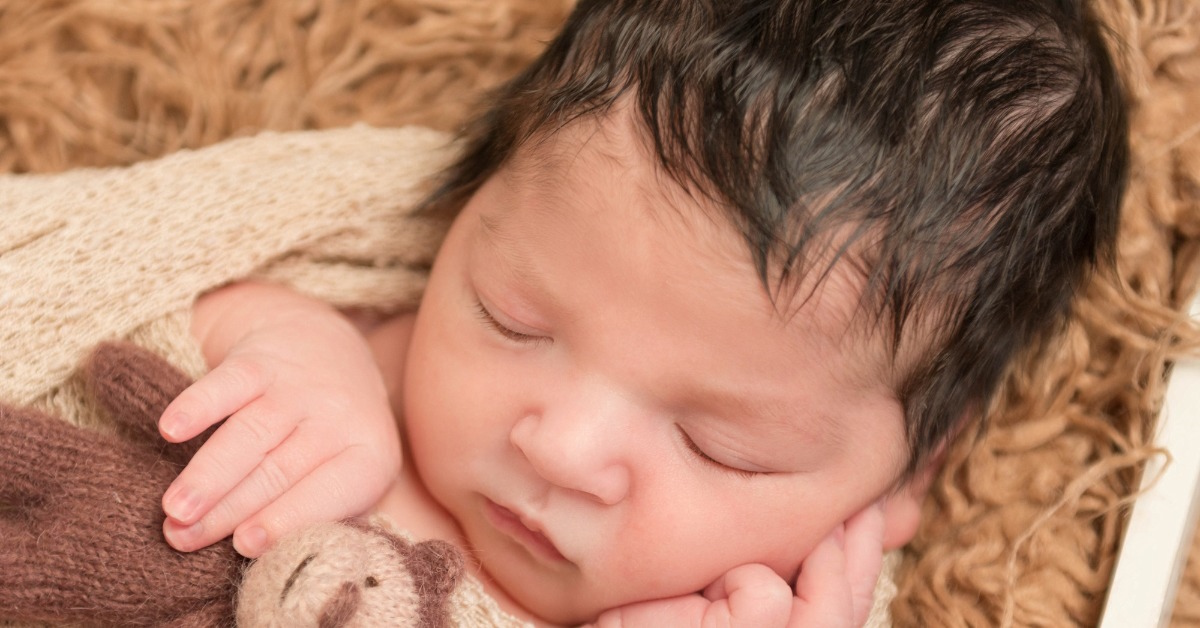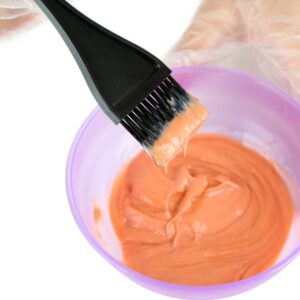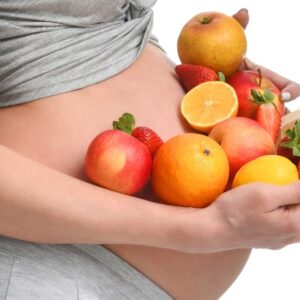A hairy baby if you do this, a dirty baby if you don’t do that… There is no end to the odd pregnancy myths and old wives’ tales.
In this article, we take a deeper look at some of the common myths to see if there is any truth in them at all. (There actually is, in some of them!)

If you’re pregnant, you may find yourself completely overwhelmed with the never-ending advice you’re given from just about everyone and his uncle. But can you distinguish truth from myth?
Let’s take a look at some of the craziest pregnancy myths out there – why do they exist and is there any truth behind them?
8 Pregnancy Myths: What Does Research Say?
In this article:
The Chinese Gender Chart
The Chinese Gender Chart is one of the most famous pregnancy myths out there and claims to be able to determine a baby’s gender even before conception, based on the month of conception and the Mother’s age.
Many sources assert that the chart has a 75-90% success rate.
Origins
The Chinese Gender Chart was discovered in a royal tomb in Beijing about 700 years ago. It’s claimed that the chart was created in 1644 to enable women only to give birth to boys. (How smart is that?!)
As you may know, boys really were often the preferred sex in traditional China due to their strength and ability to take over the family business, as well as inherit the home. Girls, on the other hand, were often little more than costly houseguests until marriage. Today, gender preference in the country still exists to an extent due to China’s one-baby policy.
The chart is said to be based on the lunar calendar, that is phases of the moon. There is a longstanding notion that our bodies are in tune with lunar activity; after all, this is where the idea of the werewolf came from, and it’s the origin of the word “lunatic”.
A Scandinavian study published in 1986 rather boldly concluded that menstruation was based upon lunar cycles after finding that 28% of menstrual patterns studied began around the time of a full moon.
Truth?
Although the details of the chart’s discovery seem to be covered in mystery (Who discovered it? And in which tomb?), the idea of one existing isn’t entirely unreasonable based on China’s gender preference. The lunar background may also lend a little bit of truth to this famous myth, although many studies have disregarded any associated link.
But does the chart work? In a word, no. The 1999 study “Fetal sex determination: the predictive value of 3 common myths” found that the chart successfully predicted a child’s gender 50% of the time, with the Swedish study Accuracy of the Chinese lunar calendar method to predict a baby’s sex: a population-based study concluding that this method was “no better at predicting the sex of a baby than tossing a coin“.
The chart also (of course) makes no allowances for fraternal twins. It seems that the Chinese Gender Chart is nothing more than a bit of fun for Moms and Dads-to-be. (Something that makes me quite happy considering all Chinese girls that would otherwise never have been born!)
Antenatal Heartburn = Hairy Baby?
Heartburn is one of the most common and most uncomfortable side effects of pregnancy. But is it much more than simply an annoying symptom? It has been suggested that women who suffer from severe heartburn during pregnancy are more likely to deliver a baby with a full head of hair! But is it true, or is it just another pregnancy myth?
Origins
There are two origins of this notion of heartburn indicating how much hair your baby will have; there’s the traditional old wives tale origin, and the more recent, scientifically-based origin. The old wives’ tale was born from the idea that an unborn baby’s big mop of hair could tickle the Mother’s gastrointestinal tract, causing heartburn and reflux symptoms.
Scientifically, it’s claimed there are links between estrogen and heartburn and estrogen and fetal hair growth. As we all know, when we’re pregnant, our sex hormones, notably estrogen, go through the roof – they’re who to blame for those famous pregnancy mood swings.
Truth?
Firstly, the notion of the baby’s hair tickling the Mother from the inside is ridiculous, and based on this, there is absolutely no truth whatsoever to the myth. But what about the scientific origins? Could they prove that this myth is actually a fact?
Research has shown that higher levels of estrogen can increase heartburn and reflux symptoms due to the relaxation of the sphincter. Studies also show that estrogen levels contribute to fetal hair growth. Therefore, a correlation was created between the two, suggesting that as both heartburn and hair growth are linked to the same source, severe heartburn during pregnancy will likely indicate a hairy baby.
A study specifically looking at this was carried out in 2006, entitled “Pregnancy Folklore Revisited: The Case of Heartburn and Hair.” Interestingly, 23 out of 28 women who reported severe antenatal heartburn gave birth to a baby who was deemed to have a greater quantity of hair than the average newborn, whereas 10 out of 12 women who reported no heartburn at all delivered babies who were almost bald.
Although more research needs to be carried out to completely debunk this myth, it’s possible that this seemingly crazy idea could, in fact, be true! So if you’re experiencing a lot of heartburn and reflux, make sure you have a hairbrush handy in your hospital bag!
Hands Up: Can Your Actions Cause Cord Tangling?
Another popular old wives tale now. This one claims that a pregnant woman who raises her arms in the air can cause the umbilical cord to tangle, knot, or wrap around the baby’s neck, possibly cutting off the essential blood and oxygen supply.
Origins
This is a sneaky pregnancy myth. Although the exact origins are unknown, it’s thought that this one was made up by women hoping to get out of the household chores! Whether that’s true or not hasn’t been determined, but it’s certainly a clever little ditty if it is.
It’s really important to take things easy during pregnancy. Not only do we get tired far quicker than usual (energy expenditure has been found to be up to 28% greater during pregnancy), but research has also found a link between increased periods of rest and reduced cases of premature births. Bearing these things in mind, back in the days when Dads didn’t have the same level of involvement in pregnancy and childcare as they do today, it would have been remarkably simple to convince Dad that reaching up to put the clean dishes away could endanger the baby.
Truth?
100% myth! Whether it is arms in the air, down by your side, or even touching your toes, your actions cannot influence the movements of the umbilical cord. What does affect the cord is the baby’s movements. If you have a very active baby, there is a chance that they could become entangled in the cord. In fact, this is the case for about 25% of all births, and it very rarely causes any problems. In most situations, the Doctor or Midwife is simply able to slip a finger under the cord and pull it back over the baby’s head.
Need more reassurance? Well, how about this? Some research suggests that not even your baby can affect cord movement, never mind you!
Desperate to find out why Christmas lights always knot themselves up over their months stored away, in 2007 researchers Smith and Raymer placed a piece of string in a box, rotating it for a short amount of time. Of the 3145 times this was done, tangling or knotting occurred 50% of the time.
So, it seems if a cord wants to get itself tangled up, it will, and no amount of careful arm positioning will make the slightest bit of difference. However, it may be worth trying to pull the wool over Dad’s eyes every now and then so you can relax with a cup of tea!
The Best Of The Rest
There are loads of crazy pregnancy myths out there, and we’ve only scratched the surface of these above. So let’s take a quick look at some other corkers that didn’t quite make the top 3.
- Not eating enough fruit during pregnancy means a baby will be born dirty… Almost all newborns are born with traces of vernix caseosa, a wax-like substance covering the body. It forms during the third trimester and acts as protection for the delicate skin, and is in no way dependent upon fruit intake.
- Eating cheese during pregnancy causes newborn cradle cap… Cradle cap is a harmless scalp condition that most babies have. It’s caused by an enzyme deficiency common in infants and presents itself as dry, yellow, flakey patches not too dissimilar from dandruff. Eating cheese does not determine whether your child will get cradle cap or not. (Learn more about cradle cap here.)
- Drinking coffee or red wine during pregnancy causes birthmarks… Nope! Birthmarks are red, brown, or purple blemishes on the skin – they’re usually small but, in rare cases, can appear quite large. The exact cause of birthmarks is unknown, but it’s generally accepted as being related to cells and capillaries under the skin rather than to food.
- Going outside during a full moon causes a cleft palate… Absolutely not. Once again, we’re back to the lunar calendar, and although there may be some truth behind the notion that things go a little crazy around the time of a full moon, there is no truth behind the theory that it can cause a cleft palate. In many cases, this condition is hereditary, and researchers believe obesity, alcohol consumption, stress, and lack of folic acid to be risk factors.
- A full moon can induce labor… Yet another moon-based theory. Although we solar calendar followers often disregard the notion of full moon activity, lunar calendar followers are adamant that our bodies correspond to the different phases. A 1984 American study actually found that more spontaneous membrane ruptures occurred during a full moon than at any other time. Is this merely a coincidence, or is this myth actually true? Hmmm… Be sure to take this with a pinch of salt!
Read Next
- Couvade syndrome – facts or fiction?
- How mom’s diet affects the gender of her child
- Poll on body change during pregnancy

Paula Dennholt founded Easy Baby Life in 2006 and has been a passionate parenting and pregnancy writer since then. Her parenting approach and writing are based on studies in cognitive-behavioral models and therapy for children and her experience as a mother and stepmother. Life as a parent has convinced her of how crucial it is to put relationships before rules. She strongly believes in positive parenting and a science-based approach.
Paula cooperates with a team of pediatricians who assist in reviewing and writing articles.






